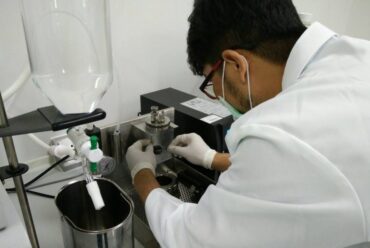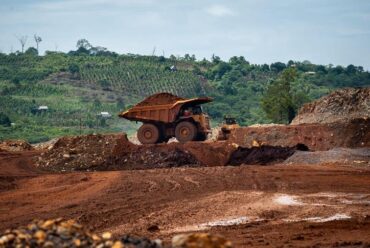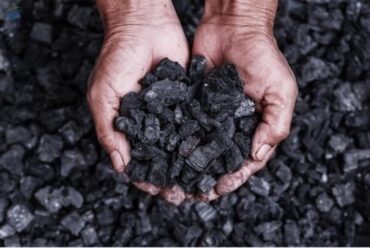10 Mining Natural Resources in Indonesia and Their Benefits
Mining natural resources are one of Indonesia’s valuable assets that have made a significant contribution to the country’s economic growth. This article will discuss 10 natural mining resources found in Indonesia and their benefits. Let’s explore the extraordinary potential that Indonesia has in the mining sector.
UNDERSTANDING MINING NATURAL RESOURCES
Mining natural resources are a collection of minerals, metals and minerals that are exploited for various human needs, such as industry, construction and energy. In Indonesia, mining natural resources have an important role in economic and industrial development.
10 NATURAL MINING RESOURCES IN INDONESIA AND THEIR BENEFITS
1. GOLD
Gold is a precious metal that has high economic value.
Benefits: Apart from being used in jewelry, gold is also used in the electronics industry, such as making components for electronic devices, because of its corrosion resistance. Gold is also a safe investment and a source of income through exports.
2. COPPER
Copper is an excellent conductor of heat and electricity. It is used in the production of electrical cables, electronic equipment, and transportation systems.
Benefits: The main benefit of copper is that it supports the growth of manufacturing industries that require cables and electronic components.
3. COAL
Coal is the main source of energy in Indonesia. It is used in power generation, industry, and transportation.
Benefits: Coal supports the energy supply for the Indonesian people and is a source of state income through exports.
Also read: 5 Largest Coal Producers in the World
4. PETROLEUM OIL
Petroleum is a major energy source and is also used in the production of chemicals and petrochemicals.
Benefits: Petroleum supports a variety of industries, including transportation, manufacturing, and agriculture. Income from petroleum exports is also a significant source of state income.
5. BAUXITE
Bauxite is the main raw material in aluminum production.
Benefits: Aluminum is used in a variety of industries, including construction, automotive, and food packaging. Aluminum production also creates jobs and drives local economies in areas that have bauxite reserves.
6. TIN
Tin is used in the production of electronic solders and batteries.
Benefits: This lead product is important in the electronics and wireless device industry. Tin production and exports are also a source of income for Indonesia.
7. NICKEL
Benefits: Nickel is used in the production of stainless steel, batteries and electronic components. Nickel helps improve the quality and durability of these products. Nickel production is also one of the main contributors to Indonesia’s exports.
8. IRON SAND
Iron sands are the main source of iron ore used in the construction and manufacturing industries.
Benefits: It is an important raw material in steelmaking. Iron sand supports the growth of the construction sector which is vital in infrastructure development.
9. NON-METAL MINERALS
Benefits: Non-metallic minerals such as phosphate are used in making agricultural fertilizers. Sulfur is used in the chemical, paper, and pharmaceutical industries. Kaolin is used in the ceramic and paper industries. This mineral supports various industrial sectors.
10. INDUSTRIAL MINERAL
Benefits: Industrial minerals such as salt, zeolite, and talc are used in various industries, including food, chemical, cosmetics, and pharmaceuticals. This mineral has a variety of applications and supports various products that we use every day.
These mining natural resources are Indonesia’s valuable assets that provide economic benefits and support various industries. It is important to manage these resources wisely so that they are sustainable and provide long-term benefits to the country and society.
Also read: Increasing the Use of Coal and Minerals for the Domestic Sector
POTENTIAL AND DISTRIBUTION OF MINING RESOURCES IN INDONESIA
Indonesia, with its incalculable natural treasures, lies as a country abundant with various mining resources, from the west to the east of the archipelago. The following is the potential and distribution of mining resources in Indonesia:
1. GOLD
Potential: Indonesia has great potential for gold, especially in Papua and Kalimantan. As one of the magnificent gold mines such as Grasberg in Papua, Indonesia shows its existence as one of the main players on the world mining stage.
Distribution: Gold mines are found in the provinces of Papua, West Nusa Tenggara, Southeast Sulawesi and Central Kalimantan.
2. COPPER
Potential: The potential for copper in Indonesia is very high, especially in Papua and other islands such as Sulawesi and Java.
Distribution: Copper mines are found in several areas in Papua, Sulawesi, West Java and East Kalimantan.
3. COAL
Potential: Indonesia has one of the largest coal reserves in the world, especially in Kalimantan and Sumatra.
Distribution: Coal reserves are spread across South Kalimantan, East Kalimantan, South Sumatra and Riau.
4. PETROLEUM OIL
Potential: Petroleum has great potential in Indonesian waters, such as off the coast of Aceh, North Sumatra and East Kalimantan.
Distribution: The main oil reserves are located off the coast of Aceh, Riau and East Kalimantan.
5. BAUXITE
Potential: Indonesia has significant bauxite reserves on Riau Island, Riau Islands and West Kalimantan.
Distribution: Bauxite mines are found on Riau Island, Riau Islands and West Kalimantan.
6. TIN
Potential: Indonesia is the largest tin producer in the world, with mining potential spread across various islands such as Bangka, Belitung and Singkep.
Distribution: Tin mines are found in the Bangka Belitung Islands and Singkep Islands.
7. NICKEL
Potential: Indonesia’s nickel reserves are located in Sulawesi and Papua.
Distribution: Nickel mines are found in Southeast Sulawesi, Central Sulawesi and Papua.
8. IRON SAND
Potential: Large iron sand reserves are located in Java, Kalimantan and Sulawesi.
Distribution: Iron sand mines are found in Central Java, East Java, South Kalimantan and Central Sulawesi.
9. NON-METAL MINERALS
Potential: Indonesia has non-metallic mineral reserves such as phosphate in West Kalimantan, sulfur in West Java, and kaolin in Bangka Belitung.
Distribution: Phosphate mines are found in West Kalimantan, sulfur is found in West Java, and kaolin is found in Bangka Belitung.
10. INDUSTRIAL MINERAL
Potential: Industrial minerals such as salt, zeolite and talc are spread across various regions in Indonesia.
Distribution: Industrial mineral mines are spread across various islands such as Java, Bali and Sumatra.
The vast potential and distribution of natural wealth in the form of mining is an eternal wealth for Indonesia. However, it needs to be wise in its management, so that the benefits are abundant in the long term for the country and society, without ignoring the potential environmental impacts that could occur.
BENEFITS OF MINING NATURAL RESOURCES FOR INDONESIA
Mining natural resources have an important role in Indonesia’s economic development. Benefits include:
1. ECONOMIC INCOME AND INFRASTRUCTURE DEVELOPMENT
The mining sector makes a significant contribution to Indonesia’s GDP and creates jobs. Mining resources are used in the construction of roads, bridges, and buildings.
2. ENERGY AND MANUFACTURING INDUSTRY
Coal and petroleum are vital energy-producing engines for Indonesian society, used in power plants to maintain a never-ending flow of energy. Metals such as copper, nickel and tin support Indonesia’s manufacturing industry.
3. EXPORT AND INVESTMENT
Mining natural resources are an important export commodity that brings in foreign exchange for the country. Mineral reserves such as gold and silver attract foreign investment.
Also read: List of Mining Companies in Southeast Sulawesi
MINING NATURAL RESOURCES CONSERVATION EFFORTS IN INDONESIA
Conservation of natural mining resources is a must in this modern era. These non-renewable natural resources must be managed sustainably so that they can be enjoyed by future generations. In Indonesia, efforts to conserve mining natural resources are increasingly receiving attention. Following are some of the efforts made:
1. STRICT SUPERVISION AND REGULATION
The Indonesian government has tightened supervision and regulations related to mining. This includes mining permits being granted only to companies that meet strict environmental and safety standards. These regulations also include environmental impact assessments before starting mining operations.
2. SOIL RECLAMATION
After mining is complete, mining companies are required to carry out land reclamation. This means restoring excavated land so that it can be reused for other purposes, such as agriculture or reforestation. This step helps reduce the ecological impact of mining.
3. USE OF GREEN TECHNOLOGY
The mining industry is increasingly turning to green technology. This includes the use of more energy efficient equipment, better waste management and increased use of renewable energy in mining operations.
4. EDUCATION AND ENVIRONMENTAL AWARENESS
Increasing understanding of the importance of conserving natural mining resources is an important step. Environmental education and awareness programs are implemented to educate the public about the impacts of mining and the importance of preserving natural resources.
5. COOPERATION WITH NGOs
Mining companies often collaborate with NGOs (Non-Governmental Organizations) and environmental organizations to develop conservation initiatives. They participate in environmental restoration programs and environmental impact monitoring.
6. TECHNOLOGICAL INNOVATION
Mining companies continue to seek technological innovation to reduce their impact on the environment. For example, they are looking for ways to reduce water and air pollution and optimize water use in mining operations.
7. RESEARCH AND DEVELOPMENT
Governments, mining companies and universities conduct research to identify technologies and best practices in the conservation of mining natural resources. The results of this research are used to improve practices in the field.
Efforts to conserve mining natural resources in Indonesia are a positive step in protecting the environment and the country’s valuable assets. With stricter regulations, technological innovation, and collaboration between the private and public sectors, it is hoped that natural mining resources can be managed more sustainably for future generations.
Mining natural resources in Indonesia have extraordinary potential and provide great benefits for this country. From gold to coal, Indonesia has emerged as a major player in the global mining industry. It is important for all of us to manage these resources wisely and sustainably to create a better future.
With the extraordinary potential of mining natural resources in Indonesia, it is important for us to understand their role and benefits. Hopefully this article provides useful insight into the wealth of natural mining resources in our homeland.







